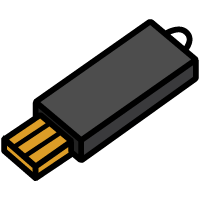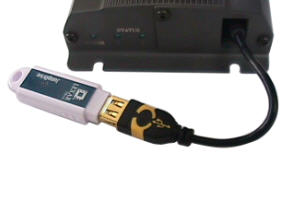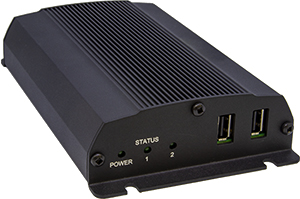 Web Authorizer USB Configuration
Web Authorizer USB Configuration
Configure with a USB Flash Drive
If any of these conditions are true...
- The Web Authorizer must use a static IP address.
- The CyberAudit-Web server can only be reached with a domain name or it cannot be reached on the default https:// port 443.
- A proxy server is required to reach the CyberAudit-Web server.
- It is a Web Authorizer 2.
...then the Web Authorizer must be configured using a USB Flash Drive.
|

|
||
|
 Original Model Web Authorizer with recessed USB ports |
||
|
 Web Authorizer 2 |
Additional links:

